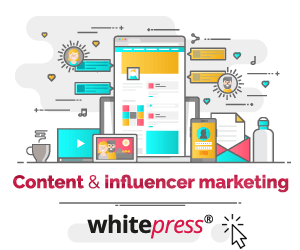A business may be able to offer excellent products or services for sale, but it will matter little at the end of the day if you can’t get the word out to attract customers. That’s the very basis of marketing, right? And, in the same way, you may have created excellent branded content to do exactly that – promote your company and generate sales. But again, it won’t make a lot of difference if you’re not reaching your target audience. That’s where Promoted Posts will enter the picture, to increase the reach of your marketing content and ultimately increase ROI for the business. Sounds great? Let’s find out more!

What are Promoted Posts?
Promoted Posts are a particular type of Native Adverts, which themselves are a type of paid ad that is mostly found online and is designed to blend in with the appearance or functionality of the platform that it is on. For example, a native ad in an online newspaper would appear just like any other article that was published, such that it doesn’t give the impression of being an ad at all. Promoted posts or sponsored content are the native adverts of the social media world, and so they are designed to appear just like other content on a particular platform. There will be one important difference of course, which is that the promoted post is being used to market a product or service. As per regulations, promoted content will usually have to include the word “sponsored” on it, so that people can quickly tell the difference, though that doesn’t prevent such ads from hitting the mark.

Types of Promoted Posts
For just about every social media platform that allows advertising, you can imagine, therefore, that you’re likely to find some sponsored content there. On Twitter, a promoted post could be a tweet by a celebrity that mentions a brand that they like to use. Sponsored content will appear in a person’s Facebook news feed just like any other post by a person or a page that they follow, except that they don’t necessarily have to already. On Instagram, an influencer might post a photograph that includes placement of a product that they have been paid to promote. Just think about how content on each particular social media channel appears, and that’s just how the promoted posts will look too.
There are two options for your business when it comes to promoting posts. Firstly, you can pay to sponsor content that already advertises your product or service on a given platform. This allows your marketing to reach new audiences and, as a result, to increase brand awareness. Alternatively, you can pay for an influencer to promote the brand for you by producing different content that blends in natively with their other posts. Then, you can even repurpose an influencer’s sponsored content in order to promote it further. This process is streamlined on Facebook to make it straightforward, or influencer marketing software is available to help you do it. As a rule of thumb, the latter approach tends to produce higher rates of engagement than sponsoring a brand’s own posts does.

Advantages of using Promoted Posts
First of all, because all native ads are crafted to blend in to the environment that they have been created for, they are, by design, a non-intrusive form of advertising. As in the newspaper example mentioned earlier, a sponsored ad there could appear the same as any other article. You might not even immediately realise that you’re looking at sponsored content because it’s clever, funny, informative, entertaining or even all of the above. It most certainly doesn’t scream “buy me!” in the way that some old-fashioned style marketing does. This is great news for the modern consumer who has started to grow tired of being constantly bombarded with marketing non-stop from all directions – who, as a result, has started to learn strategical blindness towards banner ads, who fast-forwards through television commercials and who has installed an ad-blocker on their internet browser.
Promoted posts don’t have the same problem of being off-putting for consumers because they make the most of engaging content that is shared by influencers that are already liked and trusted. This goes hand-in-hand with the strategy of further promoting an influencer’s posts, as suggested above, rather than sponsoring the brand’s existing content. The reason for this is the general public now put more trust in “the masses” – people like them – than they do in “the man” – the establishment. People might still have a little more trust in brands than they do in the government or the media, but only just.
What’s more, it turns out that context of marketing is important, in that it matters how someone first hears about your brand. If someone first hears about a brand through a friend, a leading expert, or a respected celebrity, then they are more likely to transfer that trust over to the brand itself. Promoting the posts of an influencer is, therefore, likely to have a greater impact than sponsoring the brand’s content would, because people are more likely to listen to the advice of those that they trust.
This leads nicely onto another advantage of promoted posts, which is that they land straight on the doorstep of your target market. By gaining sponsorship from a suitable page or influencer who has a connection with your brand, your content that is promoted by them will automatically reach your target audience – who, by the very definition of being a suitable influencer, are precisely their followers. This means that you’ll be able to go out and actively seek out, and reach, your brand’s target market without waiting for them to come to you – while all the time just holding out in hope that they don’t end up finding one of your competitors instead. What’s more, you will already know how well the post should perform, in terms of reach and influence, before sponsoring it, by having information about the existing reach of an influencer or page.

Finally, sponsoring a brand’s content, or paying for the promotion by an influencer, means that the budget for that marketing is well controlled and the target audience well defined. The cost will be known beforehand according to the maximum reach of a post so you won’t have to worry about going over budget. Furthermore, promoted posts appear in the feed of anyone who fits the desired target audience, which you are able to specify exactly when launching the sponsorship. As a result, you will also be helping to counterbalance the decline of organic reach – the size of the audience that a post reaches without paying for any sponsorship – which is one of the biggest challenges facing brands that use social media marketing these days.
Promoted Posts for Bloggers
If you create valuable content, a lot of advertisers can actually reach out to you and offer you collaboration. However, to get to this point, you need to spend a lot of time to raise your own brand’s awareness, recognition and reputation. On the way to the success (which is getting a few collaboration requests a day), you can offer your services to brands instead. While not all of them may agree, you are likely to find a few who would like to get you on board and involve in their marketing activities.
To do so, you should prepare a clear and transparent offer with rules of collaboration and added value you can bring to the table. You can either do manual outreach to companies who could be interested in your services or use one of content marketing platforms like Whitepress.net to find you, first dream advertiser. Remember – these may be small steps, but you need to be patient if you want to prepare a lot of promoted posts in your blogging career! Another thing to remember is not to share your “spray and pray” approach, which means spamming with your offer anyone, anywhere and anytime. There surely will be a lot of people who won’t be interested in any cooperation with you for many reasons, one of them can be simply not being a great fit for your blog activity. Good luck with your projects!









